IN THE GALLERY: When The Smoke Clears

When The Smoke Clears, 2023
Installation View
Photo: Simon Strong
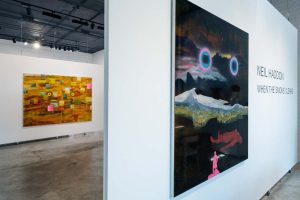
When The Smoke Clears, 2023
Installation View
Photo: Simon Strong
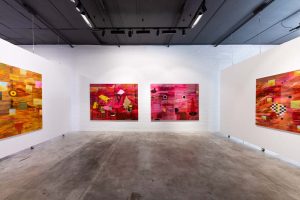
When The Smoke Clears, 2023
Installation View
Photo: Simon Strong
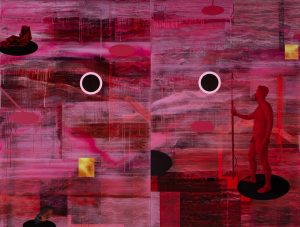
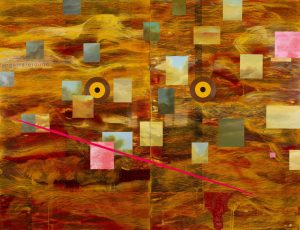
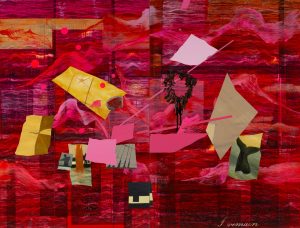
The Wreckage (I remain), 2021
oil, acrylic and lacquer on over digital print aluminium panels
176 x 232 cm (diptych)

When The Smoke Clears, 2023
Installation View
Photo: Simon Strong
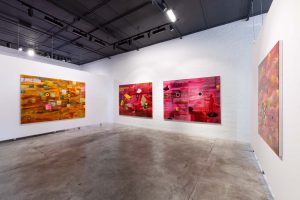
When The Smoke Clears, 2023
Installation View
Photo: Simon Strong
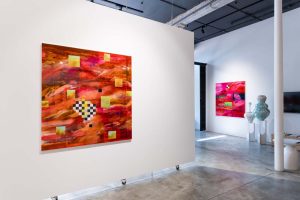
When The Smoke Clears, 2023
Installation View
Photo: Simon Strong
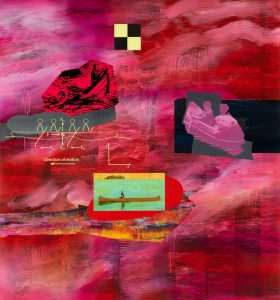
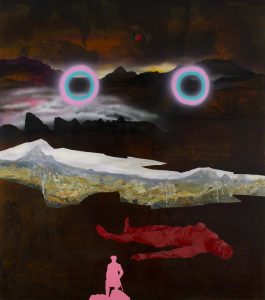
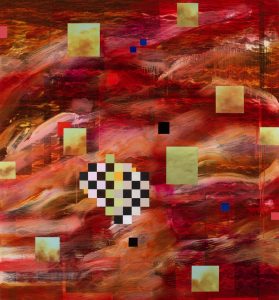

When The Smoke Clears, 2023
Installation View
Photo: Simon Strong
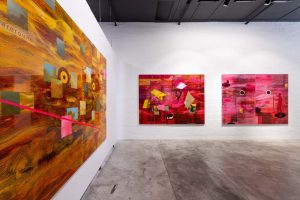
When The Smoke Clears, 2023
Installation View
Photo: Simon Strong
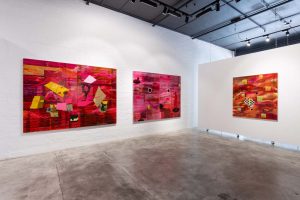
When The Smoke Clears, 2023
Installation View
Photo: Simon Strong
Neil Haddon
16 Mar - 6 Apr 2023
In When the Smoke Clears, Neil Haddon presents a new body of paintings that are influenced by his research into the life of James Kelly (1791 – 1851). Kelly was a master mariner, whaler, and harbour master.
Although Neil Haddon arrived in Australia more than twenty years ago, his experience of migration echoes that of Paul Carter, who writes, ‘the migrant does not arrive once and for all but continues to arrive, each new situation demanding a new set of responses’. Haddon brings his experience of migration together with artistic production to conjure a distinctive way of working whose very nature is transitory, moving, and unfixed. The paintings in When the Smoke Clears employ the tools of migratory aesthetics, including the use of dislocated, fragmentary imagery, a compounded sense of past and present time, and memory, associations, and representations formed elsewhere. Haddon moves through stories and histories relating to Kelly, treating the historical record as an undiscoverable territory whose names might never be known.
“Last year I read James Kelly’s handwritten account of his 1815 circumnavigation of Tasmania, First Discovery of Port Davey and Macquarie Harbour. This account was written at least six years after the events, probably longer. As Kelly and his crew rowed through the narrow entrance to a vast natural harbour on the West Coast of Van Diemen’s Land, they passed through clouds of smoke generated, Kelly speculates, by Tasmanian Aboriginal hunters. Kelly named the place ‘Macquarie Harbour’.
I also a letter from James Bruni, Kelly’s son, written while he and his younger brother were at boarding school in England. In the letter, the son asks his father to send him ‘a couple of knives and some marbles.’ James Bruni was killed by a ‘blow from a whale’ when he was 21. His brother, Tom, died in a boating accident on the River Derwent one year later when he was 16.
As the past pulls away and the future begins
I say goodbye to all that as the future rolls in
Like a wave
And the past with its savage undertow lets go
I am a migrant to Tasmania. I wanted to enter the story of Kelly and his family as if I were discovering it for the first time, bringing to bear associations, empathies, and memories formed elsewhere. Aspects of Kelly’s story have been woven together with mine, images from my background set in dialogue with his; at times critical, at times empathetic, often ambiguous and unclear, as if shrouded in smoke.
In The Pensive Image, Hanneke Grootenboer proposes that some paintings ‘confront us in such a way that our wondering about the work of art – its subject of meaning – is transformed into our thinking according to it’. A migratory way of thinking and working, the new response, becomes a tool for critical engagement.”
Click HERE for full exhibition catalogue
